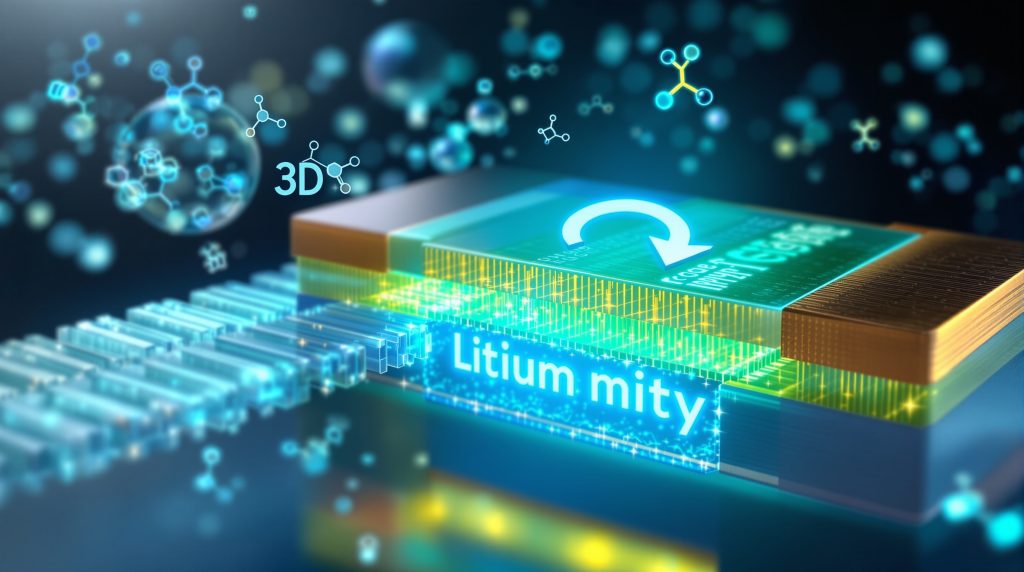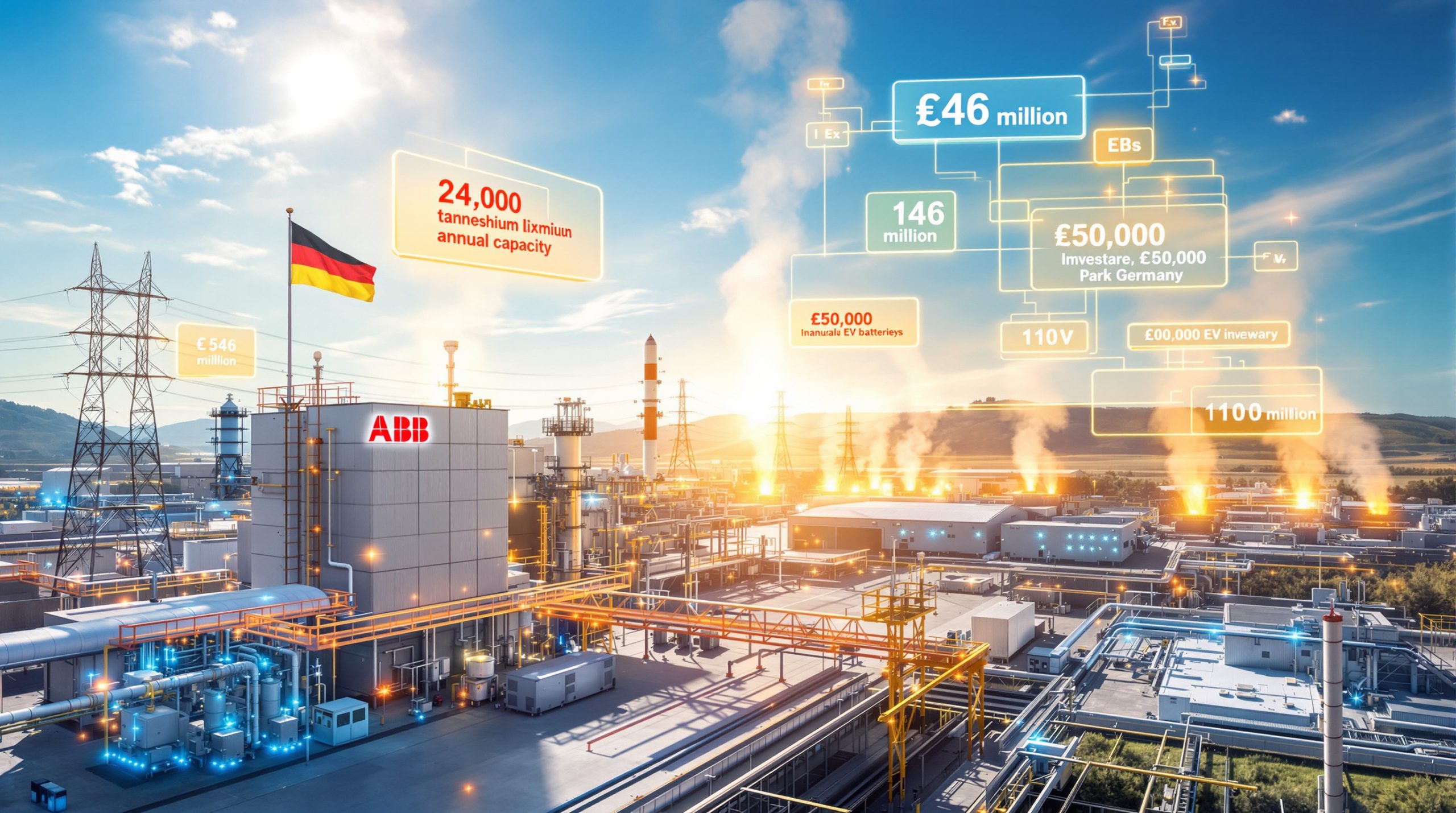Self-Assembling Electrolyte Technology: Revolutionizing EV Battery Recycling
Battery recycling has long been an afterthought in the electric vehicle industry, with manufacturers focusing primarily on performance and cost. However, a groundbreaking development from MIT researchers is changing this paradigm with self-assembling electrolyte technology specifically designed for recyclability. This innovation represents a fundamental shift in how we approach battery design and end-of-life management.
The Traditional Recycling Challenge
Current lithium-ion battery recycling processes face significant hurdles that limit their effectiveness and economic viability. Conventional methods require energy-intensive thermal and chemical treatments that consume substantial resources while yielding suboptimal recovery rates. The complex multi-layer structure of modern batteries makes component separation technically challenging and often economically unfeasible.
Traditional electrolytes present particular problems during recycling. Their flammable nature creates hazardous conditions during disassembly, requiring specialized handling and safety protocols. Additionally, the intimate mixing of components makes clean separation nearly impossible, resulting in downcycled materials rather than true circular reuse.
The recovery rates for critical materials like lithium, cobalt, and nickel remain disappointingly low in conventional recycling processes. This inefficiency perpetuates dependence on mining virgin materials, with all the associated environmental and geopolitical concerns.
Core Innovation: Aramid Amphiphile Technology
The breakthrough self-assembling electrolyte is based on aramid amphiphiles (AAs), specialized molecules that mimic the structural stability of Kevlar while offering unique recycling properties. MIT researchers modified these aramid amphiphiles with polyethylene glycol to enable efficient lithium-ion conductivity, creating a material that balances performance with recyclability.
According to Yukio Cho, PhD '23, the first author of the MIT study published in Nature Chemistry: "Our approach is to start with easily recyclable materials and figure out how to make them battery-compatible. Designing batteries for recyclability from the beginning is a new approach." This represents a fundamental rethinking of battery development priorities.
The technology exploits a fascinating self-assembly mechanism. In water, these specially engineered molecules form nanoribbons with robust, Kevlar-like backbones and ion-conducting surfaces. A hot-pressing technique then transforms these nanoribbons into solid-state electrolyte layers that maintain structural integrity during battery operation.
This molecular architecture creates a dual-purpose material that both functions effectively during battery use and enables simplified recycling at end-of-life. The aramid backbone provides mechanical stability while the polyethylene glycol modifications create pathways for lithium ions to move through the structure.
How Do Self-Assembling Electrolytes Transform Battery Recycling?
The most revolutionary aspect of this technology lies in its controlled disassembly mechanism, which fundamentally changes how batteries can be processed at the end of their useful life.
The "Cotton Candy Effect"
When exposed to simple organic solvents, the self-assembling electrolyte dissolves rapidly in what researchers have likened to "cotton candy in water." This rapid dissolution triggers a cascade effect that allows the entire battery to disassemble at the molecular level, eliminating the need for energy-intensive crushing, shredding, or high-temperature processing.
This dissolution happens in minutes rather than the hours or days required by conventional recycling methods. The rapid disassembly drastically reduces the energy requirements of the recycling process while simultaneously creating cleaner material streams for recovery.
The process works at ambient temperature conditions, further reducing the energy footprint of recycling operations. By eliminating high-temperature processing requirements, the technology also reduces the carbon footprint of battery recycling breakthrough while improving workplace safety conditions.
Component Recovery Enhancement
The molecular-level separation enabled by self-assembling electrolytes creates significantly cleaner material streams. Electrode materials separate without the cross-contamination that plagues conventional recycling processes, preserving more of their value and enabling direct reuse in some cases.
This clean separation makes critical minerals including lithium, cobalt, and nickel more accessible for recovery. While specific recovery rate improvements require further validation in scaled operations, the technology shows promise for increasing the economic viability of recycling operations.
The reduced processing complexity lowers the economic threshold for recycling viability. Fewer processing steps translate to lower capital and operational costs for recycling facilities, potentially expanding the percentage of batteries that can be economically recycled.
What Materials Science Principles Enable This Technology?
The self-assembling electrolyte represents a convergence of several advanced materials science concepts that together create its unique properties.
Molecular Self-Assembly Mechanisms
At the heart of this technology is controlled molecular self-assembly, a process where molecules organize themselves into ordered structures without external direction. The aramid amphiphiles contain both hydrophobic (water-repelling) and hydrophilic (water-attracting) segments that drive predictable nanostructure formation in aqueous environments.
The aramid backbones provide mechanical stability similar to high-performance polymers like Kevlar, creating a robust structural framework. Meanwhile, the polyethylene glycol modifications create ion-conducting pathways that allow lithium ions to move through the material during battery operation.
The hot-pressing techniques transform these self-assembled nanoribbons into solid-state electrolyte layers with the necessary density and mechanical properties for battery applications. This processing approach creates materials with highly controlled nanostructures that would be difficult to achieve through conventional polymer synthesis methods.
Performance Characteristics
While specific quantitative performance data requires verification from primary research sources, the MIT team has demonstrated that the electrolyte successfully conducts lithium ions between common electrode materials. The material maintains stable interfaces with these components while preserving its recyclable nature.
The electrolyte has been shown to function with lithium iron phosphate (LFP) cathodes and lithium titanium oxide (LTO) anodes, indicating compatibility with established battery chemistry systems. This compatibility suggests potential for integration into existing battery manufacturing ecosystems.
How Does This Technology Perform in Real-World Battery Applications?
While primarily designed for recyclability, the electrolyte must still deliver acceptable performance in operational batteries to be commercially viable. Testing has revealed both promising capabilities and current limitations.
Compatibility with Standard Battery Materials
MIT researchers have successfully demonstrated the electrolyte's functionality with lithium iron phosphate (LFP) cathodes and lithium titanium oxide (LTO) anodes. These materials represent established, commercially-viable battery chemistries with known performance characteristics and supply chains.
The electrolyte has shown compatibility with common current collectors and separators used in commercial batteries, suggesting it could be integrated into existing manufacturing processes without requiring completely new production systems or materials.
The technology maintains stable interfaces with electrode materials during operation, addressing one of the key challenges in solid-state electrolyte development. This interface stability is crucial for long-term battery performance and cycle life.
Performance Limitations and Optimization Areas
According to the MIT research team, "Performance was limited by polarization effects during fast charging," indicating one of the primary areas requiring further optimization. These polarization effects create efficiency challenges that would need to be addressed for applications requiring rapid charging capabilities.
The researchers acknowledge that ion transport rates are currently lower than premium liquid electrolytes, potentially limiting power density in certain applications. This suggests the technology may initially find applications in energy-focused rather than power-focused use cases.
As Yukio Cho noted, "We don't want to say we solved all the problems with this material. But what we're picturing is using this material as one layer in the battery electrolyte. It doesn't have to be the entire electrolyte to kick off the recycling process." This indicates the team envisions implementation as a component within hybrid electrolyte systems rather than a complete replacement for conventional options.
Ongoing research is focused on improving conductivity while maintaining recyclability, seeking the optimal balance between performance and end-of-life management. This represents the central challenge in commercializing the technology.
What Environmental and Economic Benefits Does This Approach Offer?
The technology's impact extends beyond technical performance to address broader sustainability and economic considerations, potentially transforming the environmental footprint of the battery industry.
Environmental Impact Reduction
By enabling recycling at ambient temperatures with simple organic solvents, the technology eliminates much of the toxic solvent usage in conventional recycling processes. This reduces both worker exposure to hazardous chemicals and environmental contamination risks.
The simplified disassembly process substantially reduces energy consumption for battery recycling. While specific percentage reductions require further verification at scale, the elimination of energy-intensive crushing, shredding, and thermal processing suggests significant potential energy savings.
The clean separation of components minimizes hazardous waste generation during recycling. By producing purer material streams, the process reduces the need for additional refining steps that typically generate secondary waste products.
Perhaps most importantly, the technology supports circular material flows for critical minerals demand surge. As Yukio Cho explained, "If we can start to recycle lithium-ion batteries from battery waste at scale, it'll have the same effect as opening lithium mines in the US." This perspective highlights the strategic material security benefits beyond direct environmental improvements.
Economic Advantages of Designed-for-Recycling Approach
The simplified disassembly and separation processes should lower processing costs for end-of-life battery management. Fewer processing steps, reduced energy requirements, and elimination of specialized high-temperature equipment translate to lower capital and operational costs for recycling facilities.
The clean separation increases recovered material value by improving purity. Higher-quality recovered materials command better prices and can be directed to higher-value applications rather than downcycled to lower-value uses.
By enabling more efficient recovery of critical materials, the technology reduces dependency on virgin material extraction and its associated price volatility and geopolitical complications. This creates a more stable and predictable cost structure for battery manufacturers.
The technology creates potential for domestic recycling industries rather than relying on offshore processing. This localization of the value chain has economic multiplier effects while reducing transportation-related environmental impacts and supply chain vulnerabilities.
How Could This Technology Reshape EV Battery Supply Chains?
The implications of easily recyclable batteries extend throughout the electric vehicle ecosystem, potentially transforming how manufacturers approach battery design and lifecycle management.
Lithium Supply Stabilization
Enhanced material recovery creates "urban mining" opportunities from existing batteries, establishing a secondary supply source that complements primary extraction. This diversification helps stabilize supply in a rapidly growing market.
The technology could reduce pressure on geographically concentrated lithium resources, addressing both environmental concerns about extraction and geopolitical concerns about resource access. This diversification of supply has strategic implications for national resource security.
By creating a more diverse supply base, the technology could help decrease price volatility in the battery metals landscape. More stable pricing enables better long-term planning for both battery manufacturers and EV producers.
Ultimately, the approach accelerates transition to closed-loop material cycles where batteries power vehicles, then become raw materials for new batteries. This circular model is both environmentally and economically superior to the current predominantly linear system.
Regulatory Compliance Advantages
The technology aligns with emerging extended producer responsibility regulations that are increasingly placing recycling obligations on battery and EV manufacturers. By simplifying recyclability, manufacturers can reduce compliance costs and risks.
The approach supports battery passport initiatives that track materials through lifecycles, enabling more transparent and verifiable sustainability claims. This data-driven approach to material tracking is becoming a regulatory expectation in many markets.
Designed-for-recycling batteries help manufacturers meet recycled content mandates that are beginning to appear in various jurisdictions. These regulatory requirements are likely to become more stringent over time, making proactive adoption of recyclable designs strategically advantageous.
The technology simplifies end-of-life management documentation and reporting, reducing administrative burdens associated with waste management regulations and recycling verification requirements.
What Are the Implementation Challenges and Timeline?
Despite its promise, several hurdles remain before this technology can achieve widespread commercial adoption.
Technical Scaling Considerations
Manufacturing processes must transition from laboratory to industrial scale, addressing issues of throughput, quality control, and cost-effectiveness. This scale-up typically represents one of the most challenging aspects of commercializing new materials technologies.
Quality control for self-assembly requires specialized monitoring systems to ensure consistent nanostructure formation. Developing these quality assurance protocols for high-volume manufacturing represents a significant engineering challenge.
Integration with existing battery production lines needs optimization to minimize disruption and capital costs. The ability to incorporate the technology into established manufacturing processes will significantly impact adoption timelines.
Long-term stability under real-world conditions requires further validation before commercial deployment. Accelerated testing can provide some insights, but actual field performance data will be essential for widespread adoption.
Commercial Adoption Pathway
Initial implementation will likely occur in specialized applications with premium on recyclability rather than maximum performance. These niche applications provide valuable field validation while generating revenue to fund further optimization.
Hybrid systems incorporating both conventional and self-assembling electrolytes represent a logical intermediate step on the path to commercialization. This approach aligns with the research team's vision of using the material "as one layer in the battery electrolyte."
The timeline for these developments will depend on both technical progress and market factors. The technology's development has received support from the US National Science Foundation and Department of Energy, indicating recognition of its strategic importance.
Retrofit solutions for recycling facilities represent another potential early application pathway. Adapting existing facilities to process batteries containing self-assembling electrolytes may offer a faster route to commercial impact than waiting for new battery designs to penetrate the market.
How Does This Compare to Other Recyclable Battery Technologies?
The self-assembling electrolyte approach represents one of several emerging strategies to improve battery sustainability, each with distinct advantages and limitations.
Alternative Recyclable Battery Approaches
Water-soluble binders represent another approach to simplifying battery recycling. These materials allow electrode components to be separated using aqueous processing. While offering a simple, non-toxic process, this approach is limited to electrode components only and doesn't address the full battery structure.
Mechanical design solutions focus on physical disassembly features that allow batteries to be taken apart more easily. While these approaches typically don't compromise performance, they require specialized equipment for disassembly and don't address the fundamental chemical separation challenges.
Direct recycling methods aim to preserve cathode and anode structures with minimal processing, maintaining more material value. These approaches preserve more of the embodied energy in battery components but still face challenges with mixed chemistries and degraded materials.
Solid-state battery technologies, while primarily developed for performance and safety reasons, may offer simplified structures that facilitate recycling. Many of these technologies remain in early development stages, but their potential for higher energy density makes them attractive for future EV applications.
Complementary Technologies
Advanced sorting systems using AI and robotics could further enhance the effectiveness of self-assembling electrolyte technology. These systems can identify battery types and optimize processing parameters for specific chemistries.
Automated disassembly lines for battery modules and packs would complement cell-level recyclability improvements. Even with easily recyclable cells, efficient disassembly of larger battery structures remains important for overall recycling economics.
Hydrometallurgical processes optimized for recovered materials could further improve the economics of recycling. These chemical processes can be tailored to the specific material streams produced by self-assembling electrolyte technology.
Blockchain-based material tracking systems could provide transparent verification of recycled content, enhancing the market value of batteries using recovered materials. This technology alignment creates stronger economic incentives for adopting recyclable designs.
What Questions Remain About Long-Term Implementation?
Several important considerations will determine the ultimate impact of self-assembling electrolyte technology on the battery industry.
Research and Development Priorities
Improving ionic conductivity without compromising recyclability remains a central challenge. Finding the optimal balance between performance and end-of-life management will require continued materials innovation.
Enhancing compatibility with next-generation cathode materials, particularly high-nickel formulations that dominate current EV battery development, will be crucial for widespread adoption. The technology must evolve alongside broader battery chemistry trends.
Developing scaled manufacturing processes for consistent quality represents another key challenge. The self-assembly mechanism that makes the technology unique also creates specific process control requirements that differ from conventional battery manufacturing.
Optimizing formulations for different battery applications and sizes will enable broader market penetration. Different use cases from small consumer devices to large grid storage systems have distinct requirements that may necessitate tailored formulations.
Industry Adoption Factors
Cost competitiveness with conventional electrolytes will significantly impact adoption rates. While recycling benefits create value at end-of-life, upfront cost parity or reasonable premiums will be necessary for widespread implementation.
Performance trade-offs acceptable to different market segments will shape application-specific adoption patterns. Markets with strong sustainability drivers may accept modest performance compromises, while performance-critical applications may require further optimization.
Integration with existing battery manufacturing infrastructure will influence how quickly the technology can scale. Approaches that require minimal retooling or process changes will face fewer implementation barriers.
Alignment with evolving mining innovations and standards will affect the technology's value proposition. As regulatory frameworks increasingly incorporate lifecycle considerations, the compliance advantages of designed-for-recycling approaches will become more significant.
FAQ: Self-Assembling Electrolytes for EV Batteries
Will self-assembling electrolytes work in all types of lithium-ion batteries?
The technology has demonstrated compatibility with common lithium iron phosphate (LFP) cathodes and lithium titanium oxide (LTO) anodes, suggesting broad applicability across lithium-ion chemistries. However, optimization may be needed for high-nickel cathodes and silicon anodes that represent the cutting edge of energy density improvements. Each chemistry presents unique interface challenges that require specific formulation adjustments.
The research team envisions the technology as one component within hybrid electrolyte systems rather than a complete replacement, which increases its potential compatibility across different battery types. This modular approach allows manufacturers to balance recyclability with specific performance requirements for different applications.
How does the self-assembling electrolyte affect battery performance?
Current versions show moderate performance limitations, particularly during fast charging due to polarization effects. These limitations make the technology better suited to energy-focused applications rather than power-intensive uses that require rapid charging.
The technology is best implemented as one component within a hybrid electrolyte system rather than a complete replacement for conventional electrolytes. This approach allows manufacturers to optimize the balance between performance and recyclability based on specific application requirements.
It's important to note that performance optimization remains an active area of research, with ongoing efforts to improve conductivity while maintaining the recyclable properties that make the technology valuable.
Does the recyclable design compromise battery safety?
No, the aramid backbone provides thermal stability similar to Kevlar, potentially enhancing safety compared to conventional liquid electrolytes. This inherent thermal stability addresses one of the primary safety concerns in lithium-ion batteries.
The solid-state nature of the electrolyte reduces risks associated with leakage and flammability that plague liquid electrolyte systems. Solid electrolytes generally offer safety advantages by eliminating volatile and flammable components.
The chemical stability of the aramid structure suggests good compatibility with common electrode materials, reducing the risk of unwanted side reactions that can lead to safety issues in some battery designs.
How much more expensive are batteries with self-assembling electrolytes?
While precise cost data for commercial implementation isn't yet available, the basic materials used in the self-assembling electrolyte aren't inherently expensive. The aramid amphiphiles and polyethylene glycol modifications use relatively abundant and affordable chemical precursors.
The water-based self-assembly process eliminates the need for expensive and hazardous solvents used in some advanced battery manufacturing, potentially offering process cost advantages that partially offset material costs.
The potential savings in recycling costs may offset any premium in initial production, especially as manufacturing scales and regulations increasingly incorporate end-of-life management costs into producer responsibilities.
When will this technology be available in commercial electric vehicles?
The technology has been demonstrated in laboratory settings, but commercial implementation timeline predictions should be viewed with appropriate caution. Material technologies typically require 5-10 years to move from successful laboratory demonstration to widespread commercial implementation.
Initial commercial applications are likely to appear in specialized markets where recyclability commands a premium, potentially within 2-3 years. These early applications provide valuable real-world validation while generating revenue to support continued development.
Mainstream EV adoption will depend on successful performance optimization, manufacturing scale-up, and integration with existing battery production systems. This broader implementation could begin within 5-8 years if development proceeds successfully.
Reimagining Battery Design for Circular Economy
The development of self-assembling, easily recyclable electrolytes represents a paradigm shift in how we approach battery technology. Rather than focusing exclusively on performance metrics and addressing recycling as an afterthought, this innovation demonstrates the value of designing with end-of-life considerations as a primary objective.
The MIT research team's approach challenges the conventional battery development paradigm by prioritizing recyclability from the initial design stage. This fundamentally different perspective asks not just "How can we make batteries perform better?" but "How can we make batteries that both perform well and return cleanly to their component materials?"
As electric vehicle adoption accelerates globally, the importance of sustainable battery technologies becomes increasingly critical. Annual lithium-ion battery production is projected to grow dramatically over the coming decade, making end-of-life management an increasingly urgent challenge. Self-assembling electrolytes offer a promising pathway toward truly circular battery systems that minimize environmental impact while conserving valuable resources.
The approach also highlights a broader principle applicable across clean energy technologies: sustainability must be engineered into products from conception rather than addressed only at disposal. This principle of "designed recyclability" may well become a standard consideration in future battery innovations, potentially transforming how we evaluate battery technologies beyond just performance and cost metrics.
The work at MIT, supported by the US National Science Foundation and Department of Energy, exemplifies how fundamental materials science research can address pressing environmental challenges. By reimagining the molecular structure of battery components, researchers have created a potential pathway to more sustainable energy storage.
Furthermore, this innovation aligns perfectly with growing industry focus on mining decarbonisation benefits, as more efficient battery recycling reduces the need for energy-intensive mining operations.
Further research directions include optimizing ionic conductivity, scaling manufacturing processes, and validating long-term stability under real-world conditions. The balance between performance and recyclability will remain a central challenge, but the conceptual breakthrough of designing specifically for disassembly represents an important shift in battery development philosophy.
Are You Investing in the Next Battery Breakthrough?
Stay informed about game-changing innovations like self-assembling electrolyte technology with real-time alerts from Discovery Alert's proprietary Discovery IQ model. Our system instantly identifies significant ASX announcements across the battery metals sector, helping you capitalise on emerging opportunities before the broader market. Discover how major mineral discoveries can generate substantial returns by visiting our discoveries page.




